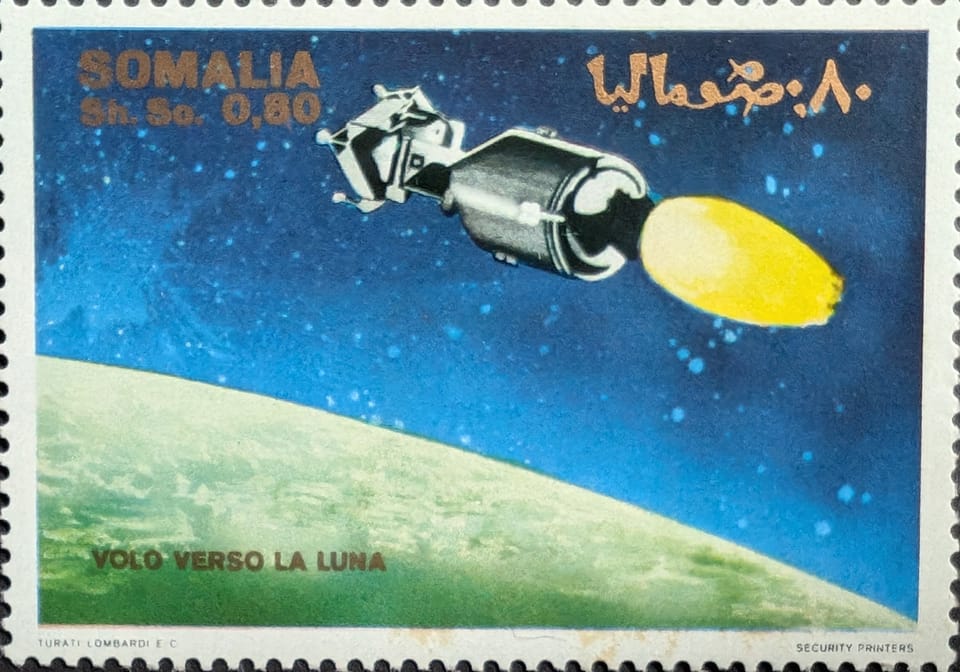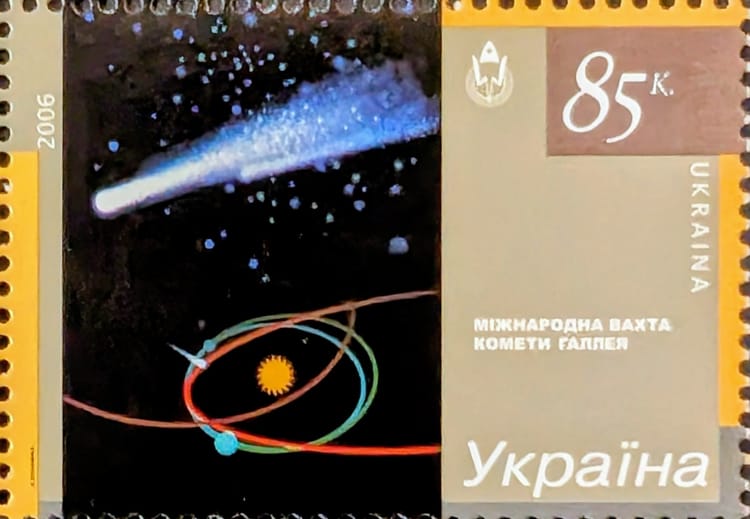SpaceX’s Falcon 9 Launches Raise TacRS Questions

On August 30, 2024, a bureaucratic miracle occurred–the U.S. Federal Aviation Administration (FAA) approved SpaceX’s return to flight request for its Falcon 9. It took a day to make that decision, two days after a Falcon 9 first-stage booster toppled over after landing on one of the company’s automated landing barges. Within twelve hours of the FAA’s approval, another miracle happened–SpaceX launched two more Falcon 9s with no issues.
ORS/TacRL/TacRS
Talk about responsive launch. SpaceX only has to paint camouflage on a Falcon 9 and top it with a boonie hat, and it would become a tacticool responsive launch.
Proof that AI is broken? Unready? Or is it the tool handler’s fault? You decide!
It would still be cheaper than the tens of millions the United States Space Force (USSF) spends on smaller rockets (and presumably small satellites) as part of its Tactical Responsive Space (TacRS) program. The USSF’s budget weenies provide this description of TacRS (on page 336):
“The TacRS program will provide initial operational capabilities starting in FY 2025. The program will leverage rapid, agile, and end-to-end acquisition processes to quickly evolve the design of future TacRS missions. This approach will enable timely integration and readiness for launch call-up, CCMD tasking, and procurement of capabilities based on current threats and priorities.”
The USSF TacRS budget designates a timeline within 24 hours from notifying the satellite and launch operators to the satellite's launch.
Some subscribers might recognize aspects of this program. That’s because the U.S. Department of Defense can be very obstinate in getting what it requires, even if it takes over twenty years and many millions to get it. In August 2020, I wrote an analysis of the United States Air Force’s (USAF) desire for this type of capability. My analysis then highlighted the USAF’s history with Operationally Responsive Space (ORS). I noted that the DoD wanted smallsats at the ready and a quick way to launch them. ORS never succeeded in that endeavor.
Like ORS, Tactical Responsive Launch/Space (TacRL–now TacRS) seems to focus on process. The need makes some sense. I guess that the need driving ORS/TacRS is simple: suppose a military Earth observation satellite is destroyed during a conflict. Logically, the DoD would like to replace that satellite within 24 hours. Or maybe it just wants the ability to deploy additional satellites quickly to respond to a conflict.
A Severe Case of the VICTUS
The DoD seems to believe it is achieving this through TacRS. However, its VICTUS demonstration programs (although the name choice–victus–is puzzling given its definition) are pursuing more than just satellite replacement. The DoD is attempting to see if commercial companies can provide spacecraft suitable for military space rendezvous and proximity operations (RPO).
It used Millenium Space and Firefly Aerospace for VICTUS NOX, which the DoD deemed a successful demonstration. It’s using Rocket Lab and True Anomaly for VICTUS HAZE (launching sometime in 2025). VICTUS SOL will build on everything learned from the previous VICTUS demonstrations.
What appears to be happening is that the USSF wants at least two things out of TacRS. It wants to launch satellites quickly–within 24 hours–and to deploy spacecraft that can conduct RPO, Earth observation, communications, etc. Those spacecraft need to be designed to quickly and reliably integrate with whatever the launch vehicle of choice is.
Based on those needs, some of the USSF’s contract award choices for this are strange—launch, for example. A rational person might be forgiven for assuming that selecting a standard, reliable launch vehicle for DoD missions would make sense. Potentially, U.S. warfighters’ lives are on the line, and using relatively untested, less reliable launch vehicles for emergency military launches seems unwise.
Looking closely at Firefly Aerospace’s Alpha launch vehicle, one can see that it’s not reliable. Firefly has attempted launching Alpha five times. Of those five attempts, one was an outright failure. Two of the others had problems achieving the proper orbit, resulting in satellites re-entering the Earth’s atmosphere much earlier than planned. Right now, there’s a three out of five chance that–should the USSF choose to use Alpha–the emergency satellite payload would never reach orbit. I suspect the Alpha used for VICTUS NOX was not just an off-the-shelf specimen.
That’s not a knock on Firefly–the Alpha is still in development. The USSF hopefully recognizes that Firefly’s rocket needs a bit more maturity before relying on it as an operational TacRS asset. Rocket Lab’s reliability numbers for its Electron are much better, but the rocket can’t lift as much mass into orbit as the Alpha. However, SpaceX’s Falcon 9 seems to be a quicker and more reliable option than either, especially considering the latest two launches.
Ditto for spacecraft manufacturers. True Anomaly operates two spacecraft, which it deployed earlier in 2024. Those are the only two it’s deployed so far. Maybe the company hasn’t faced any challenges with them, but that would be surprising since it’s the first time its satellites have been in space. Millennium Space and Rocket Lab have a little more experience operating spacecraft in orbit. However, other satellite manufacturers (yes, one of them is SpaceX) have significant satellite manufacturing capacity and operational experience.
What’s Being Tested?
To be clear, TacRS is a USSF research and development program, so experimentation is expected, especially if TacRS is process-focused. However, is the development for USSF mission capability or a commercial business? I would suggest it’s for mission capability and that there are a few problems with the USSF relying on relatively unproven companies with TacRS.
The first is that using unproven companies introduces more variables into the process. If a VICTUS mission fails, is it the process that led to that failure? Or is it the companies’ attempts to comply with the process? Root-cause investigations don’t need more variables. Second (and with no malice toward True Anomaly and Firefly), TacRS seems to be developing the companies at the expense of mission capability. Wouldn’t the demonstration provide more relevant proof of concept if it relied on established launch companies and satellite manufacturers instead (not necessarily legacy companies)?
SpaceX demonstrated it can launch within 12 hours of notification. It did so without drama, using a run-of-the-mill Falcon 9 in the process. Twice.
Once the FAA gave the go-ahead, SpaceX probably had satellites and rockets ready to go, but theoretically, the VICTUS NOX participants were also prepared. The TacRS folks need to look hard at SpaceX’s actions and see if it could fulfill mission requirements. Based on those launches, it seems like it could. The DoD can also use SpaceX’s launches as examples for other TacRS contract requirements. Rocket Lab, for example, has demonstrated it can launch rockets. But can Rocket Lab do so as quickly as SpaceX, using its in-house manufactured satellites and rockets?
But there’s another, more existential question–is there a need for something like TacRS to begin with? Something like TacRS might have made sense when the number of remote sensing satellites orbiting the Earth was low. Those satellites probably had larger mass than Rocket Lab’s Electron or Firefly’s Alpha could lift.
But, when the Space Development Agency (SDA) is already deploying many satellites and plans to deploy hundreds more, does it also make sense to be able to launch replacements quickly (kind of)? Can an enemy take out so many satellites, especially in low Earth orbits, when more will fly overhead within ten minutes? That seems faster than launching and deploying satellites within 24 hours.
If, after answering those questions, it still makes sense to run TacRS, why not deploy actual SDA satellites for the demonstrations? They might be cheaper. And, while it’s understandable that the DoD really doesn’t want to rely on SpaceX for every single launch, it’s not like Alpha or Electron would be able to lift as much or launch as often as the Falcon 9. It just seems like Falcon 9 is a suitable candidate for TacRS.
Especially if it wore a boonie hat.
If you liked this analysis (or any others from Ill-Defined Space), I appreciate any donations (I like taking my family out every now and then). For the subscribers who have donated—THANK YOU from me and my family!!
Either or neither, please feel free to share this post!




Comments ()